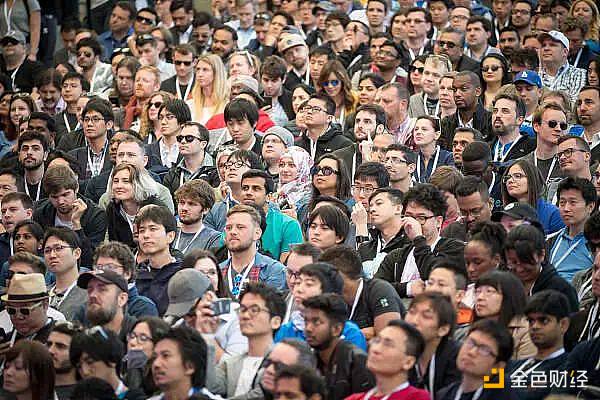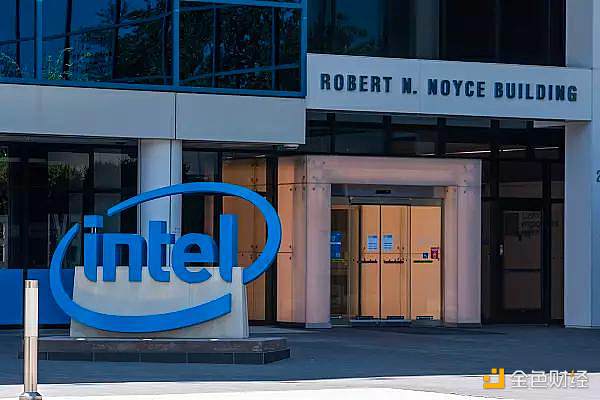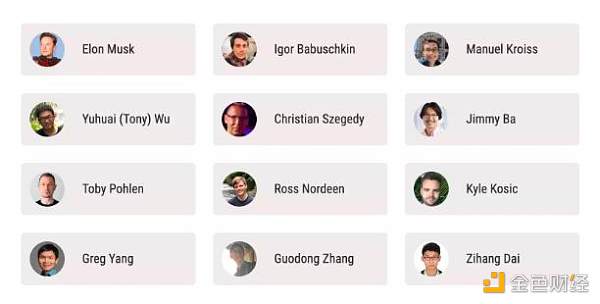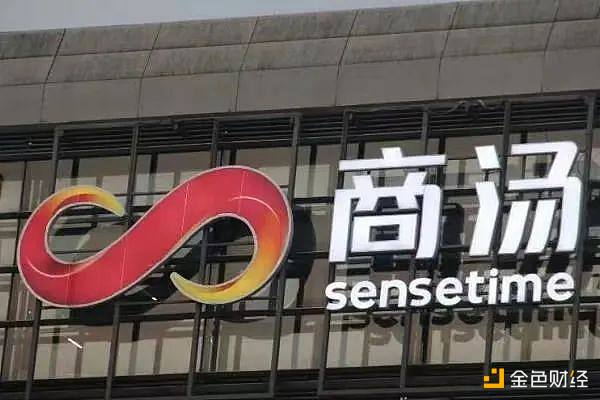Battle for AI Talent Frenzy at the Beginning of the Year, Confusion at the End
AI talent frenzy at the beginning of the year, confusion at the endAuthor: Zhou Xinyu
Time has come to the tenth month of the Chinese AI frenzy sparked by ChatGPT.
Every investor and headhunter familiar with the domestic AI landscape already has a talent map in their mind. If you have the chance to have a drink with them and chat freely, the conversation might go like this:
“Where did Zhang Qianchuan from Toutiao go?”
- A different approach, friend.tech may be the community artifact for NFT artists.
- Official publication of ‘The Musk Biography’ How does the book describe Dogecoin?
- Can Binance Launchpad, which has dominated the market for over 4 years, continue to shine?
“He was poached by MiniMax.”
Zhang Qianchuan, former User Product Manager at Toutiao, announced after leaving in early 2023 that he would start an AI application company. However, shortly after leaving, Zhang Qianchuan joined the large-scale model startup company MiniMax. According to 36Kr, MiniMax offered a considerable compensation.
“Did Seven start a business after leaving?”
“No, she joined DeepSpeech as a Product Manager.”
Seven (Wang Jingjin), former Product Manager at Douyin who left in 2022, recently joined DeepSpeech, an AI startup company valued at over $150 million. 36Kr learned that before officially joining, DeepSpeech invited her to be a consultant for half a year.
“Are there any other notable talents worth paying attention to?”
“Yes, Louis, compared to the previous two, he is more highly regarded by the industry.”
Louis, Yang Luyu, former co-founder of Musical.ly and the founder of TikTok’s overseas market. After leaving ByteDance in mid-2022, his whereabouts were a mystery for a while. In June of this year, Louis entered the AIGC gaming track with a company called “Far Light Digital Technology.”
An investor commented to 36Kr, “As long as Louis starts a business, I want to talk to him. If he does AI, even more so.”
AI entrepreneurship is hot, but in technology-based startups, product development and implementation require trial and error. In the midst of many uncertainties, talent has become a bargaining chip for pricing and transactions, and is also the most important factor in the current competition among large-scale models.
The battle to attract talent quickly ignited the track. Wang Huiwen made a high-profile entry at the beginning of the year, followed closely by Wang Xiaochuan, and more than ten entrepreneurial giants who posted AI “hero posts”.
According to AI experts from several prestigious universities, entrepreneurs represented by the “two Wangs” have almost talked to all the AI talents in the market. When interviewed by 36Kr in April of this year, Wang Xiaochuan, who heard that there were more than 20 large-scale model companies in Beijing busy recruiting teams, asked, “Can you put our (Baichuan Intelligence) recruitment email in the article?”
In the broad field of technology, AI belongs to the mature trend, and talents are not concentrated in laboratories like room-temperature superconductors, but are evenly distributed among universities, institutions, and industry giants. Those experienced investors and headhunters have long been familiar with the titles, past resumes, and latest trends of AI talents in these ten months.
For example, if you want to recruit a technical executive, you can’t avoid a trip to the birthplace of ChatGPT: Silicon Valley.
Before headhunter Mia went to Silicon Valley, she packed two cans of premium-packaged West Lake Longjing tea and four bottles of Laoganma chili sauce in her suitcase. Upon arrival, she went to a bar in Mountain View, accompanied by these special products from her homeland, along with offers from domestic companies and an annual salary of nearly ten million yuan, to recruit several algorithm scientists.
In Mountain View, where Google, Microsoft, and other tech giants are gathered, it is not difficult to encounter venture capital tycoons who are also searching for AI talent, in addition to headhunters.
Some people have seen Baidu Vice President Jing Kun, the creator of Baidu’s “Xiaodu” series of smart products, wearing a dark T-shirt on the street; while Huang Yungang, a partner of Source Code Capital, and Dai Yushen, a managing partner of ZhenFund, have been seen on the lawn of Stanford University and Sand Hill Road, known as the “Wall Street of the West Coast”.
More recently, in early May, Wang Xiaochuan appeared at an AI technology LianGuairty in Silicon Valley. Speaking to dozens of Chinese engineers at the event, Wang Xiaochuan talked about his entrepreneurial ideals of “AI reshaping search,” attempting to build closer relationships with talent. In an interview with 36Kr, he mentioned, “There are indeed some excellent leading figures and even more star-level talent in large companies and universities in China who are currently in the United States.”

△ Google’s I/O conference held at its headquarters in Mountain View attracts many AI talents. Image source: Visual China
Facilitating connections between domestic founders and Silicon Valley AI talent has also become a business opportunity. One headhunter in Silicon Valley recalls that in March alone, there were almost nightly LianGuairty events organized by Chinese intermediaries in Mountain View. The registration fee alone reached tens of thousands of RMB, with certain requirements: having successfully started a business or invested in a good project.
While companies are spending heavily to recruit people, they also need to prevent their employees from being poached.
In order to retain talent, one startup raised the salaries of nearly ten core employees by 30%, and almost all engineers within the company use “code names.”
Large companies are also on high alert. When Baidu announced the establishment of the large-scale language model “Wenxin Yiyu” (One Word from the Heart) project, the participating members were called into a meeting by HR that same night and had to sign the non-compete agreement again.
The consensus quickly formed: the companies with the most talent reserves are the closest to “China’s OpenAI”.
Million-dollar salaries make it difficult to poach Silicon Valley talent
Given the scarcity of AI talent nowadays, Mia believes that million-dollar salaries are not exaggerated.
In the first quarter of 2023, over 170,000 Chinese AI companies emerged like mushrooms after the rain. People in the industry like to describe the entrepreneurial enthusiasm in the AI field with a saying: “There are more than 20 companies in Beijing alone claiming to be able to develop large-scale models.”
However, on the other hand, there is a reported shortage of 300,000 AI professionals in China by the Ministry of Industry and Information Technology. To be even more strict, how many people in China have experience in developing complete large-scale models? Hai Lang, a senior talent consultant in the AI industry, told 36Kr, “Not more than 100 people.”
If you want to recruit high-level executives who can lead a team of hundreds to work on projects like P9 and P10, there are only a few CTOs and chief scientists left in the domestic market. “If companies want to hire technical executives, they can only look at Silicon Valley,” explained Hai Lang.
Unfortunately, whether it’s tea, Lao Gan Ma, or a salary of ten million, it’s difficult to impress talent in Silicon Valley.
When a researcher was asked about the salary conditions by Mia, he bluntly refused: “My wife and children are here, and it would be difficult to solve the education problem for my children after returning to China.”
In just over a year, Joshua, an algorithm engineer from the Microsoft Bing team, will be able to get a green card in the United States as he desired. In his life plan, after accumulating two more years of work experience, he will move from Washington to Silicon Valley to start his own business.
He doesn’t want to leave Silicon Valley, even though he has almost 99+ unread messages and notification dots on job search apps every day since February this year. In addition to salary, Joshua also sees companies offering hidden benefits: no need to bear OKRs for the first half of the year.
After being bombarded with job search information for nearly a month, Joshua closed several job search app pop-ups.
In the battle for talent, companies with mature landing scenarios have a greater advantage. In Mia’s view, the landing scenario is the company’s resume and is more attractive to talent.
For companies with immature landing solutions, either they have founders like Wang Huiwen and Wang Xiaochuan who can both attract talent and raise money, or they rely on “pie in the sky” to attract talent.
However, the gap between the domestic research environment and the reality of Silicon Valley makes the ideal “pie” that large-scale model entrepreneurs draw less convincing.
During her time in Silicon Valley, Mia went to Intel headquarters. There, each algorithm engineer can have access to four to five hundred GPUs. “But in China, four to five hundred GPUs are often the upper limit of computing power that a project team can apply for,” said Mia.

△ Intel headquarters. Image source: Visual China
Similarly, the generosity of Google AI Lab in terms of talent once surprised Lan Zhenzhong. There, he could freely access the computing power equivalent to several thousand A100 TPUs. Even in relatively obscure research groups, the department can still afford to hold team building events at the most expensive restaurants with the most expensive wine.
After returning to China and founding the AI company “West Lake Heart”, Lan Zhenzhong experienced for the first time the scarcity and expense of computing resources: “The research funds of the company and the school can only buy a small part, and the rest needs to be rented from public cloud services.” In order to raise funds to buy computing power, he needs to have five or six phone meetings with investment institutions and clients every day.
Returning entrepreneurs from Silicon Valley are anxious about resources, while entrepreneurs going to Silicon Valley often encounter setbacks. A well-known entrepreneur once admitted in a public setting that when asked about his recent trip to Silicon Valley, he went there not to recruit people, but to exchange technical experience.
However, a person who has communicated with the entrepreneur in Silicon Valley told 36Kr: “Don’t believe him. It’s very difficult to poach people, most people can only establish a connection first.”
Meta goes open-source, headhunters suffer for six months
At the beginning of the year, AI technology experts were still the most sought-after talent in the industry. Massive language models with parameters in the billions, like ChatGPT, were still considered “imported goods”. For most companies, if they want to do a “Chinese OpenAI”, they must aggressively recruit talent for technology.
However, unexpected events occurred shortly after.
The catalyst for the change was Meta (formerly Facebook), which had long been betting on AI big models. On March 8, 2023, the large language model Llama, known as the “strongest open-source model”, was leaked and anyone could download and use it. In July, Meta, the developer of Llama, took the initiative to become a “disruptor” and open-sourced a more powerful performance model, Llama 2, which almost all companies could directly and freely use.
The open-sourcing of Llama quickly lowered the threshold for training large models. AI practitioners discovered that it was not necessary to spend so much money to recruit technical talent and train models from scratch. In theory, as long as the company has enough high-quality data, they can fine-tune Llama and train a decent model at a lower cost.
Soon, many companies’ large models sprouted like mushrooms after rain. Moreover, some models fine-tuned based on Llama were even touted as “self-developed”. An often circulated joke in the industry is: if Llama had not been open-sourced, there wouldn’t be so many “self-developed” models in China.
Following that, the value of talent in the technology field began to decline.
Several companies that used to try to poach people from Silicon Valley changed their requirements to hiring engineers from within China, with an annual salary cap of 400,000 yuan. Mia, a headhunter, ordered a song called “I Won’t Work Tomorrow” in a KTV, saying, “I feel like I wasted the first half of the year running around Silicon Valley.“
In the first half of the year, due to the immaturity of the technology, the commercialization of large models did not go very smoothly. The open-sourced Llama solved the bottleneck of large model technology and accelerated the progress of AI companies from model development to practical application.
Correspondingly, the enthusiasm of companies for recruiting technical talent shifted to product managers in the second half of the year. In the latest job postings from Netflix, the annual salary for AI product managers reached $900,000, surpassing the $650,000 for AI technical directors.
However, market supply and demand is not the only measure of top talent. The popularity of icon-level tech experts remains high.
For companies, tech experts are not just employees who write code; they are also symbolic of profound implications: technical talent represents the ceiling of technology and serves as a facade for attracting investors, customers, and more talent.
Kunlun Wanda CHO Yang Shu has always believed that talent is the most valuable asset of an AI company. The company not only needs solid R&D developers, but also an iconic figure. Just like Steve Jobs to smartphones, “The difference between an icon and a developer is that an icon has market appeal and can attract more talented people.”
In 2020, Kunlun Wanda laid out in the AIGC and AGI fields, and the overall size of the relevant teams is now close to a thousand people. However, by 2023, in order to compete for talent, Yang Shu and her HR colleagues need to communicate with nearly a hundred candidates every week. Recently, Kunlun Wanda has also invited an “icon” – top AI scientist Yan Shuicheng, to serve as the co-CEO of Tiangong AI and the director of Kunlun Wanda 2050 Global Research Institute, attracting AI talent from around the world.
“Before Dr. Yang Hongxia came, I felt that not many people in the market thought that Byte could make big models.” commented a HR from a large company.
As the former head of the M6 project of Alibaba DAMO Academy, Yang Hongxia joined ByteDance’s AI camp in early this year – this news also made many people believe that Byte now has the possibility of competing with AI “veterans” Baidu and Alibaba.
As for whether it is worth spending tens of millions to hire a technical expert for AI, the above-mentioned HR replied to 36Kr, “Before achieving technological innovation, ensure that the corporate image keeps up with the trend of the times.”
Everyone is wary of the bubble
After June, the water temperature gradually cooled down. In the first half of the year, money had flowed to the early players in the big models.
According to incomplete statistics, there were about 20 big model companies that raised money in the first half of the year, but after June, the number dropped to less than half.
An AI investor from a dual-currency fund terminated the investment process of four or five big model companies. She told 36Kr that recently they only focus on AI applications.
Unfortunately, to this day, there is still no “killer-level” application in the AI field – the market and investors are all waiting to see whether the high-flying big model technology can continue to provide substantial returns.
“CV (computer vision field) has been hot for at least a year or two, but the big model cools down very quickly.” said Hai Lang, “This year, everyone seems to have taken a lot of money, but in fact, they are under a lot of pressure.”
Along with the cooling of the track, the enthusiasm of companies for AI talent has also cooled down.
At the beginning of the year, the rush to hire was more about the excitement and FOMO (Fear of Missing Out) emotion of companies facing new technologies. “Regardless of whether hiring so many people is useful or not, let’s first stir up the atmosphere.” The demands that Mia received at the beginning of the year mostly did not specify the range of recruitment, “One is that it is indeed difficult to recruit people, and the other is that companies do not know how many people to recruit.”
After careful consideration, companies gradually realized that the internet tactics of manpower and land grabbing are not applicable to big models.
Wang Huiwen once told 36Kr that he believed that having a large team “would have a negative impact”, and the minimum size should be around 30 people. In July of this year, Musk announced his entry into the large model field with great fanfare, and his new company xAI has only 12 members.

△The 12 members of xAI. Image source: xAI official website
An example of the failure of the “quantity over quality” strategy is Meta. Despite having two star large model teams, Llama and OPT, more than half of the Llama authors have chosen to leave due to the imbalance in computing resources.
In the scarce field of large models, reducing the size of the team can not only “increase the amount of disposable resources per capita” as Musk said, but also improve management efficiency. Wang Xiaochuan mentioned in a media interview that after managing a team of 3,000 people at Sogou, he found that Baichuan now only has 100 to 300 people, which makes it much easier to improve efficiency.
Moreover, research on large models is a field that urgently requires talent and intelligence, and the “quantity over quality” strategy has little effect.
“One smart brain is better than a thousand troops.” Gao Yizhao, CEO of Zhizi Engine, told 36Kr that their team’s self-developed multimodal meta-symbol ChatImg 2.0 only required less than 5 people to write the core algorithm.
As the supply and demand of large model talents tend to balance, the eagerness of companies for AI talents has quickly returned to calm.
“Basically, companies only need to hire an outstanding CTO or a single-digit number of technical leaders.” Mia has recently received a sharp decrease in the number of job offers. The flow of top talents has basically been determined in the “hot battle” of the first half of the year, and Mia has found that it is not difficult to attract engineers from domestic and foreign large factories or computer majors in universities with an annual salary of three to four hundred thousand yuan.
The caution of companies in expanding AI talents is also rooted in the talent expansion bubble that occurred in the field of computer vision (CV).
In 2018, the CV trend blew up the four AI dragons. At that time, the valuation of SenseTime, which soared to 6 billion US dollars, raised over 2 billion US dollars within a year.
Where did most of the financing go in the end? The answer is talent acquisition. At that time, even fresh graduates from CV backgrounds could earn an annual salary of 600,000 yuan.

△SenseTime. Image source: IC photo
However, many companies soon discovered that CV did not have high technical barriers. The business of AI companies in the B2B and B2G sectors was quickly eroded by upstream cloud vendors. The difficulties faced by the four AI dragons in recent years are evident. SenseTime, the first to go public, will lose 2 yuan for every 1 yuan earned by 2022.
Companies had to make scientists responsible for revenue targets. Since 2020, Hai Lang has clearly felt the change in the wind direction. Professors from universities are no longer as popular, “everyone needs people who have led teams and made products.” A logistics company that wants to transform into intelligence said more directly, “Our money comes from moving one box at a time, not from publishing papers.”
Due to revenue pressure, many highly skilled individuals who had previously joined research institutes in large companies have returned to universities. It has been observed that Chinese scientists who were previously recruited by large companies from North American universities have now resumed publishing papers in the capacity of professors.
Almost all companies do not want the talent bubble to reoccur.
Prior to the release of Llama, due to the fact that large models were a high barrier new technology, the performance criteria set by companies for talents were not specific, such as “surpassing GPT-3.5 by the end of the year, surpassing GPT-4 in the next 1-2 years.” However, Llama quickly progressed to the stage of application development, and the performance of talents rapidly shifted towards commercialization.
Making money has become the primary indicator. In the second half of the year, Mia received many demands from companies, transitioning from talent acquisition to helping manage talent projects.
A researcher from Silicon Valley expressed grievances to Mia: “(The company) promised to provide sufficient space for research. Why do they now care about revenue again?” Mia quickly responded, “The company believes in your capabilities.”
The end of 2023 is a critical point for many companies and investors to assess the value of talents.
“Investors and founders both need to see what results can be achieved by the people hired at the end of the year before deciding whether to continue investing.” said Hai Lang. From the level of satisfaction with job titles, he can sense the caution of companies this year: in 2018, it was not difficult to negotiate positions above T10 and P10 for top technical talents. However, this year, even a P9 level position requires some extra effort.
Starting the day at six or seven in the morning, swimming for an hour, then going to the laboratory to work until nine at night, and finally going home to spend time with family – this was a typical day for Lan Zhenzhong when he was studying for his doctorate at Carnegie Mellon University. “I never work overtime or bring work home,” he said.
However, in this wave of enthusiasm, Lan Zhenzhong broke his own rule. This experienced technologist and novice entrepreneur recently took the initiative to meet with many investors and started learning about management and strategy from scratch: “Before the final whistle, I am striving to make sure I am not eliminated by the market.”
(At the request of the interviewees, the names Hai Lang, Mia, and Joshua are pseudonyms.)
We will continue to update Blocking; if you have any questions or suggestions, please contact us!
Was this article helpful?
93 out of 132 found this helpful
Related articles
- One year after the Ethereum merge, what changes have occurred in the MEV supply chain?
- The American version of ‘Miaoya’ becomes popular, defining new social interactions with ‘falseness
- The Strongest Encryption Declaration in History Permissionless, Declaring War on Traditional Financial Rules
- Beginning to target centralized crypto institutions? Lazarus’ five hacking attacks within 104 days
- LianGuaiWeb3.0 Daily | Hong Kong police are investigating whether JPEX is involved in criminal activities
- My Perspective on Token2049 in Singapore
- Chain Game Weekly Google to Allow NFT Game Advertising Placement, Linea Launches Web3 Entertainment Festival






